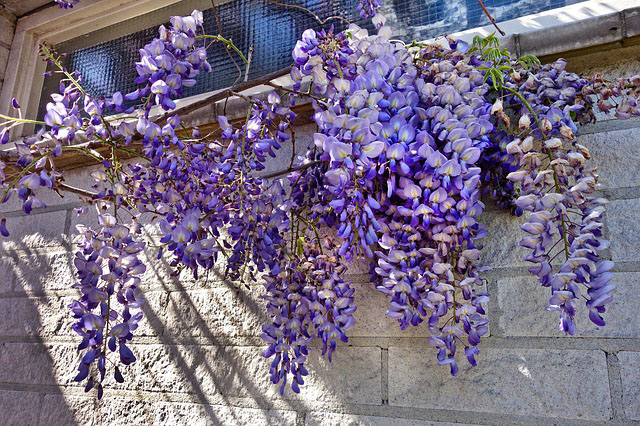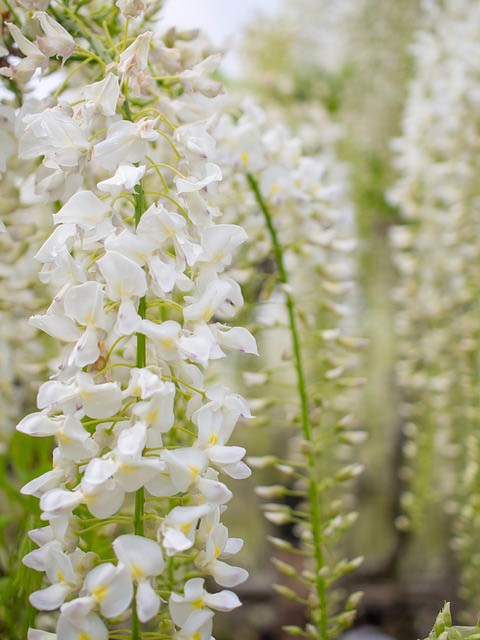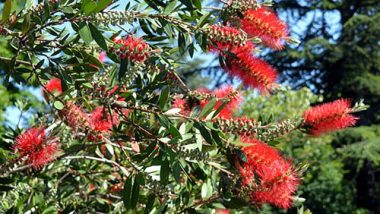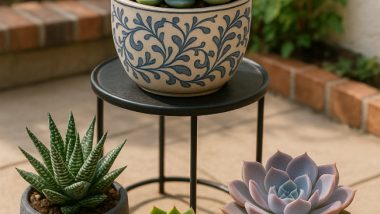Last updated on December 22nd, 2024 at 07:01 am
The Wisteria Vine. The most common is the Japanese purple Wisteria. A good woody vine that is well known for its hanging clusters of fragrant, violet-blue, flowers that bloom in spring.
However, they only bloom during the spring seasons. But, some have been known to flower again during the fall season. How to make them bloom longer during the spring seasons later in this post.
The flowers are followed by green compound foliage on the twining stems. Perfect for covering patios, arbors, or fences. The stems will get large and can vine around to almost any object nearby. Finally, it is deciduous during the winter seasons.
The Wisteria Vine is hanging over a wall.

Wisteria Hanging on a Steel fence

The White Japanese Wisteria.

Where to Place Wisteria?
These vines love the full sun they will not bloom as often if placed where there is too much shade. Give them room to grow as they can grow up to 60ft. tall and about 30 ft. wide. Place them near arbors, fences, or poles so they can wrap themselves around and bloom in early spring. The Wisteria vine can support itself once it gets into its 3rd-4th season of growth.
How to make your Wisteria bloom.
Many folks who can’t get their Wisteria to bloom think they need more fertilizer. Moreover, the biggest problem is too much nitrogen. Most store-bought fertilizers have a high concentration of nitrogen, and this element is good for growth and greenery but not flowers.
The soil is poor, alkaline, and sandy in and around the Southwest. The first sign of low phosphorus is the flowers on your Wisteria or other blooming plants do not bloom.
The element that helps make flowers bloom is phosphorus. BR-61 has a high concentration of phosphorus. So does any fertilizer with a high middle number analysis. A good natural source of phosphorus is “bone meal“.
You may have guessed that crushed up bones from animals. But before you start adding gobs of phosphorus in your soil it is recommended to test your soil first. You can read more about testing your soil for phosphorus levels by following this link. Test your soil for phosphorus.
Most garden stores will have a bone meal on their selves year round it is an organic fertilizer and has an NPK analysis of about 3-15-0 this will vary from brand to brand. A bone meal will also help encourage root growth.
Problems with Wisteria
Fungus and powdery mildew are major problems with this vine. Planting it in full sun and avoiding overspray from lawn sprinklers is best. Go organic and use neem oil to help with fungus problems. Neem oil will also kill insects but it will take several applications before it works. Learn more about Insects and Diseases in Plants.
Wisteria borers are also a big problem. They drill small holes into the larger stems. It’s best to use a good systemic borer control product to kill borers that are killing your Wisteria Vine.
Wisteria borers can seriously damage your plants if you don’t act fast. Start by inspecting your wisteria vines for signs of damage, like swollen areas or sawdust-like debris. If you spot them, prune and remove infected branches. For prevention, apply a borer-specific insecticide, such as permethrin or bifenthrin, in late spring when adults start laying eggs. Make sure to follow label instructions to avoid harming beneficial insects. You can also keep your plant healthy with regular watering and fertilizing since stressed plants are more vulnerable to borers. Stay consistent, and you’ll protect your wisteria.

Greenhouse Manager, Master Gardener, and Webmaster.
If you have any questions or enjoyed this post, feel free to share your thoughts in the comments below.


